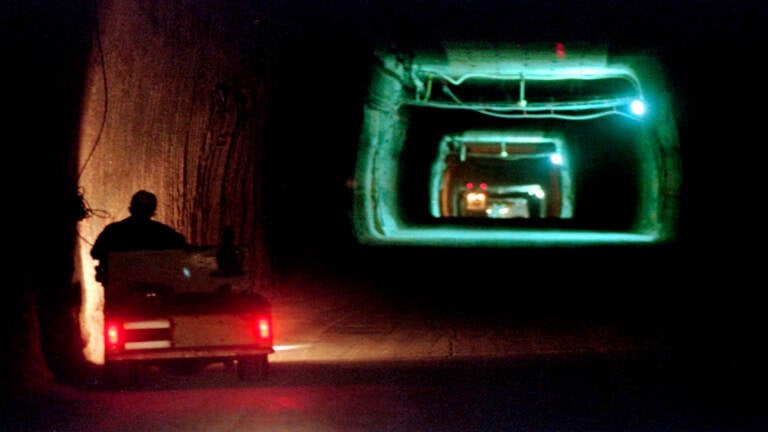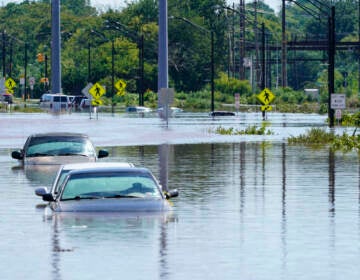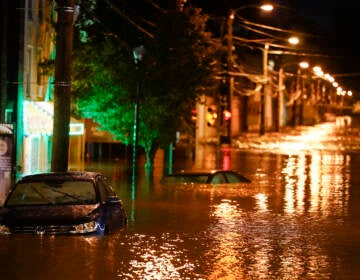Buried Secrets, Buried Waste
We unfold the never-before-told story of Earle and the classified operation that he was a part of, and explore the remnants of the atomic age and the waste it has left behind.
Listen 49:28
A worker drives cart through a tunnel inside a radioactive waste storage facility in New Mexico. The underground repository was created to house nuclear waste created by decades of research and bomb-making. (AP Photo/Eric Draper, File)
In October of 1947, a navy reserve pilot named George Earle IV received strange orders: He was to pick up several 55-gallon barrels at the Philadelphia Navy Yard, fly out 100 miles southeast of Atlantic City, and then dump them into the ocean — all in secret, in the dead of night.
Earle would repeat the mission twice more without ever being told what he was dumping. But he had a clue. Before leaving, scientists would swarm Earle and his cargo using Geiger counters to measure radiation. This told Earle one thing: Whatever he was dumping was radioactive, and probably dangerous.
It would be another three decades before Earle revealed the secret missions to the public, and even longer before anyone knew the origins of his cargo.
On this episode, we unfold the never-before-told story of Earle and the classified operation that he was a part of, and explore the remnants of the atomic age and the waste it has left behind.
We hear about the most powerful nuclear weapon ever detonated by the U.S. — and the devastation it wrought on a tiny island country; the Navajo people’s fight to seal hundreds of uranium mines scarring their land; why nuclear power plants need a new solution to house their waste; and why the future of nuclear energy could look very different.
Also heard on this week’s episode:
- We talk with Ivana Nikolić Hughes, president of the Nuclear Age Peace Foundation and senior lecturer in chemistry at Columbia University, about the legacy of America’s nuclear testing in the Marshall Islands, and her mission to find out if the islands are safe today.
- Between 1944 to 1986, the U.S. government extracted nearly 30 million tons of uranium ore from mines on Navajo lands as part of the Manhattan Project. Those mines are no longer active, but they continue to contaminate and pose a threat to those living nearby. We talk with Jonathan Nez, the former president of the Navajo Nation, about the devastating impact of those mines, and his community’s fight to close them. Nez is part of a documentary on the subject entitled “Navajo Nation USA.”
Segments from this episode
WHYY is your source for fact-based, in-depth journalism and information. As a nonprofit organization, we rely on financial support from readers like you. Please give today.






